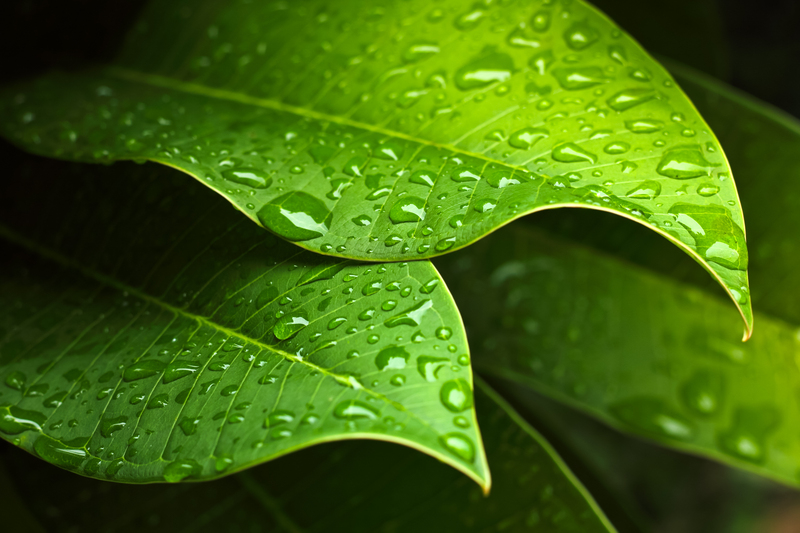Unveiling the Secrets of Container Gardening
Posted on 19/06/2025
Unveiling the Secrets of Container Gardening
Container gardening has steadily risen in popularity, providing a versatile and rewarding way for people to enjoy plants--regardless of space limitations. Whether you have a sprawling backyard, a cozy balcony, or a sunlit windowsill, container gardening unlocks countless options for greenery. In this comprehensive guide, we will unveil the core techniques and essential secrets that transform potted plants into lush, thriving displays.

What is Container Gardening?
Container gardening refers to the practice of growing plants in pots, planters, or other portable vessels rather than the open ground. This style of gardening is ideal for city dwellers, renters, or anyone seeking flexibility and creative expression in their gardening endeavors. You can grow anything from ornamental flowers to fruits, vegetables, and herbs--each flourishing in suitably chosen containers.
Why Choose Container Gardening?
The advantages of container gardening are manifold. Here are several compelling reasons to explore this gardening style:
- Space-saving design: Perfect for balconies, patios, or small yards
- Mobility: Easily rearrange your garden for improved sunlight or improved aesthetics
- Pest and disease control: Isolate affected plants and manage soil health more effectively
- Year-round gardening: Move containers indoors during extreme weather
- Creative freedom: Mix and match plants, colors, and container styles
Choosing the Right Containers
The secret to successful container gardening begins with selecting appropriate planters. The right container is not only an aesthetic choice--it must meet practical gardening needs.
Materials Matter
Containers are made from a variety of materials, each impacting your plant's environment:
- Terracotta: Naturally porous, offers good airflow but dries out quickly; best for Mediterranean herbs and succulents.
- Plastic: Lightweight and affordable, excellent for moisture-loving plants but can overheat in direct sun.
- Ceramic/Glazed: Stylish, retains moisture well, but heavier and often costlier.
- Metal: Durable and unique, though can get hot and should have proper insulation.
- Wood: Rustic and insulating but may need treatment to prevent rot.
Size and Drainage
Size is crucial. A container should be deep and wide enough to allow root expansion, preventing crowding and stunted growth.
Drainage is equally important. Always use containers with adequate drainage holes to prevent waterlogging, which may lead to root rot and unhealthy plants.
The Right Soil Mix for Lush Results
One of the well-guarded secrets of thriving potted plants is using the right soil mix. Regular garden soil is too dense for containers and hampers proper aeration and drainage.
Best Soil Options
- Potting Mix: Specially formulated, lightweight, and well-draining; ideal for most container gardens.
- Cactus Mix: Contains additional sand and perlite for excellent drainage, suitable for succulents.
- Moisture-Control Mix: Designed to retain water for plants that need constant moisture.
Consider enriching your potting mix with slow-release fertilizers and organic amendments like compost or worm castings for a nutrient-rich environment. Replenish nutrients every few months to sustain plant health and growth.
The Art of Plant Selection for Container Gardening
The fun of container gardening lies in plant selection. Certain plants naturally thrive in confined settings, while others struggle. The secret is to consider light, water, and growth habits before planting.
Ideal Plant Choices
- Herbs: Basil, rosemary, thyme, mint, and parsley do exceptionally well in pots.
- Vegetables: Tomatoes, peppers, lettuce, radishes, spinach, and dwarf beans flourish in containers.
- Fruits: Strawberries, blueberries, and even dwarf citrus trees make popular choices.
- Ornamental Blooms: Petunias, geraniums, pansies, and begonias provide vibrant color and texture.
- Shade-Lovers: Ferns, impatiens, and hostas thrive in less sunny spots.
Prioritize compact or dwarf plant varieties for the most abundant harvests and lushest displays in confined spaces.
Secrets to Arranging Plants in Containers
To create visually stunning container plantings, gardeners follow the tried-and-true "Thriller, Filler, Spiller" formula:
- Thriller: A bold, vertical focal point, such as ornamental grasses or tall flowers
- Filler: Bushier, mid-height plants that provide body and fullness
- Spiller: Trailing plants that drape over the edges, adding softness and visual interest
Vary plant heights, textures, and colors for the most attractive arrangements. Place tall plants at the center or back (for one-sided displays) and layer shorter or trailing specimens around them. This secret helps containers look deliberate and lush from every angle.
Watering Wisdom for Healthy Container Gardens
Proper watering is both a science and an art in container gardening. Potted plants dry out faster due to increased exposure. Here are secrets to mastering this essential care aspect:
- Check soil moisture daily during hot months. Insert your finger an inch deep--if it feels dry, it's time to water.
- Water deeply until it comes out the drainage holes. This encourages strong root growth and prevents salt buildup.
- Use mulch on topsoil (like small bark chips or pebbles) to slow evaporation.
- Avoid letting containers sit in standing water, which leads to root rot.
Self-watering containers are a convenient option for those who travel or have busy schedules. They store water in a reservoir at the base, allowing plants to draw moisture as needed.
Fertilization: Feeding Your Container Garden
Potted plants quickly exhaust available nutrients because frequent watering washes them away. The secret sauce for healthy, vigorous plants is a consistent feeding routine.
Fertilizing Tips
- Use slow-release fertilizers when planting for continuous nutrition.
- Supplement with liquid feed every 2-4 weeks during the growing season.
- For edibles, use organic fertilizers to maintain food safety.
Always follow package directions to avoid over-fertilizing, which can harm roots and stunt growth.
Secrets to Pest and Disease Prevention
Healthy container plants are less prone to pest infestations and disease. With proper care, you can easily spot and treat problems before they become severe.
Best Practices
- Inspect plants regularly for early signs of trouble--check for yellowing leaves, sticky residues, or insects.
- Remove dead leaves and spent flowers to improve airflow and minimize disease risk.
- Isolate new additions for a week to prevent introducing problems to your established plants.
- Use organic pesticides and natural remedies, like neem oil or insecticidal soap, if needed.
Cleaning and sterilizing containers before replanting is essential to break disease cycles.
Seasonal Container Gardening Secrets
One of the biggest perks of container gardening is adaptiveness to changing seasons. With a few secrets, you can enjoy year-round color and harvests:
- Spring: Start early crops like lettuce or pansies. Refresh potting soil after winter.
- Summer: Grow heat-loving vegetables, herbs, and annual blooms.
- Fall: Transition to hardy mums, ornamental cabbage, and late greens.
- Winter: Move pots indoors or use evergreens and freeze-tolerant plants outdoors.
Rolling racks or plant caddies make shifting containers for sun or protection easy, regardless of weight.
Creative Ideas for Decorative Container Gardening
Express your personal style through inventive container choices and plant pairings. Secret tips for eye-catching container gardens include:
- Upcycle household objects: Use teapots, boots, baskets, or old furniture for unique planters.
- Cluster containers of various heights and shapes for a dramatic layered effect.
- Paint or decorate plain pots to match your house or garden theme.
- Add decorative stones, shells, or fairy lights to enhance the container's appeal.
There are no limits to creativity. Experiment with bold color combinations, or design containers for pollinators, culinary use, or aromatic ambiance.
Common Mistakes and Secret Solutions in Container Gardening
Even seasoned gardeners encounter hurdles in potted plant care. Here are common pitfalls and expert solutions:
- Mistake: Overcrowding
- Solution: Give each plant ample room; thin seedlings as they grow.
- Mistake: Watering on a schedule (rather than checking soil moisture)
- Solution: Always test soil dryness, adjusting for weather and plant type.
- Mistake: Ignoring sunlight needs
- Solution: Group plants with similar light requirements for best results.
- Mistake: Using non-draining containers
- Solution: Drill holes or use liners to ensure proper drainage.

Final Thoughts: The Lasting Joy of Container Gardening
Unveiling the secrets of container gardening reveals not only practical tips but also the immense joy this gardening style brings. Whether you're a beginner or an experienced gardener, containers allow experimentation, learning, and connection with nature, all within your reach. Remember, the most beautiful potted gardens come from attentive care, creative expression, and a willingness to adapt and grow.
Ready to start your own thriving container garden? Armed with these expert secrets and strategies, you'll be well-equipped to nurture lush, vibrant plant displays--no matter the size of your outdoor or indoor space!
Frequently Asked Questions (FAQs) on Container Gardening
- Q: Can I grow all plants in containers?
- A: Most plants can thrive in pots if their soil, water, and space needs are met. Choose dwarf or compact varieties for best results in smaller containers.
- Q: How often should I water my container plants?
- A: It depends on plant type, weather, and container size. Check moisture daily and water thoroughly when the top inch of soil is dry.
- Q: What's the best soil for potted plants?
- A: Always use a quality, lightweight potting mix designed for containers rather than garden soil.
- Q: Is fertilization necessary for container gardens?
- A: Yes, regular feeding is crucial, as nutrients are depleted more quickly in pots.
Happy container gardening! May your plants flourish and your creative vision blossom with each new season.

